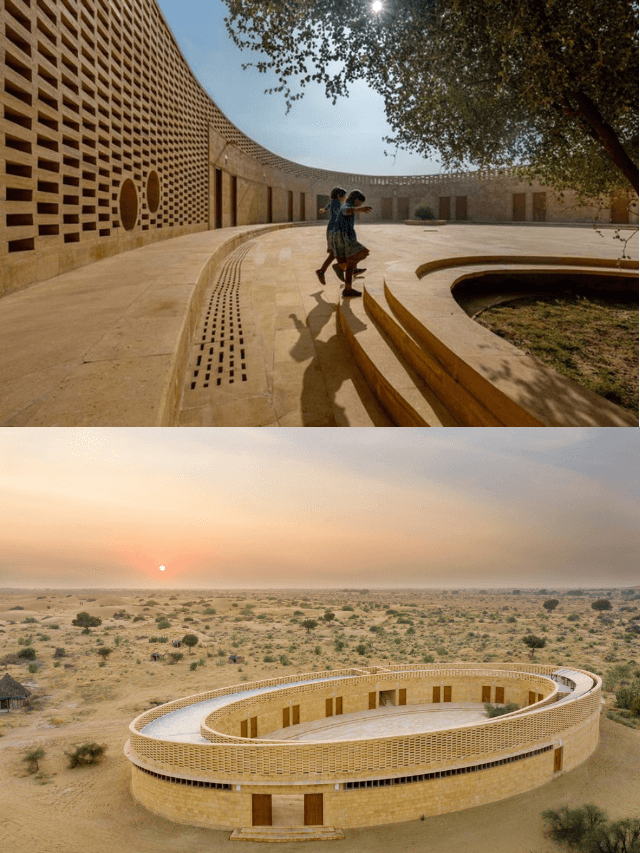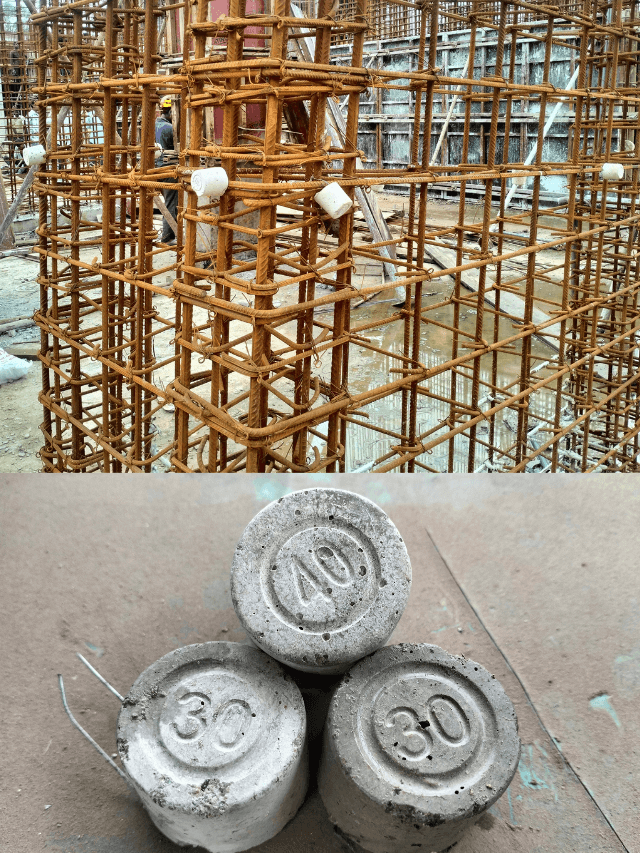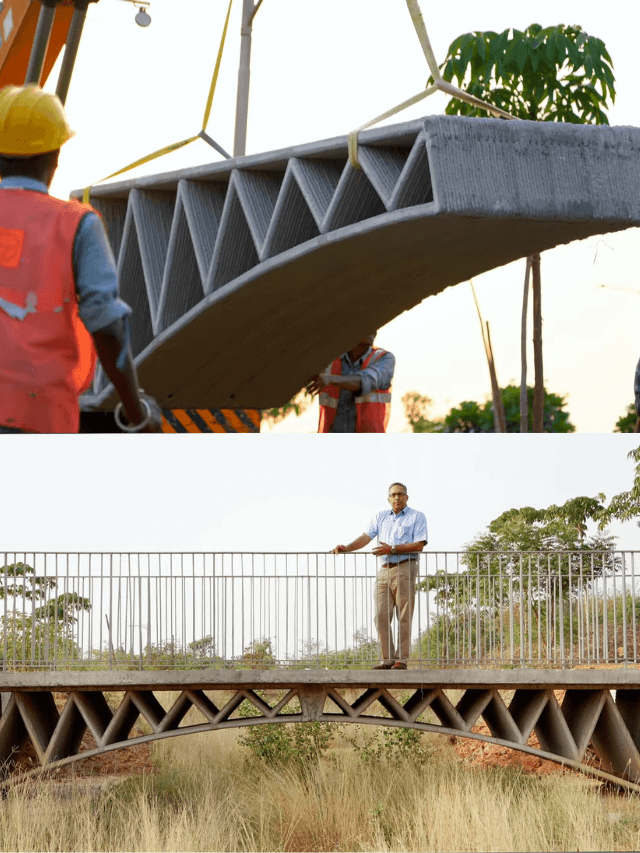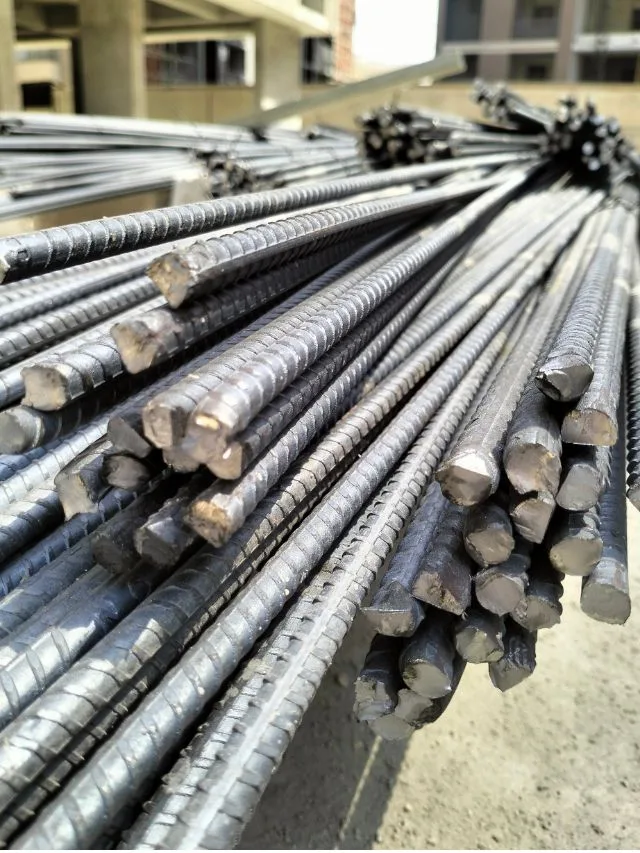A house is the place where we all return at the end of the day, and if it is beautiful and aesthetic, it brings us joy and relaxation. But beyond looks, a house should be strong, long-lasting, and free from cracks. Various components contribute to the strength of a house—and one of them is the lintel beam, which is mainly placed above openings such as doors, windows, ventilators, arches, etc.
Most of the time, when we build a house, it is constructed by a contractor or mason. There are many important things to keep in mind during the construction process, but often, these small yet crucial details are overlooked by them. However, if we have basic knowledge about these elements, we can identify mistakes and get them corrected on time.
In today’s blog, we will learn about one such small but important component of a house — the lintel beam.
What Is the Role of Lintel Beam in House Construction?

The Slump Test of Concrete for workability of concrete : A practical Procedures.
Why do we use PCC (plain cement concrete) in construction? 7 tips to know.
How to calculate the concrete quantity for the footing?
What is a lintel beam?
Lintel beam is a horizontal structural member placed above openings like doors, windows, ventilators, or arches to support the load coming from the structure above. It transfers the load to the side walls and prevents cracks or damage around the openings. Lintel beams are essential for maintaining the structural stability and durability of a building. When we construct a building or house, there are openings like doors and windows. We can’t place anything directly above these openings because door and window frames cannot bear heavy loads. As a result, the masonry work and plaster above them tend to crack. That’s why we provide a lintel beam, which helps avoid such issues and ensures better stability.
When we construct a building or house, there are openings like doors and windows. We can’t place anything directly above these openings because door and window frames cannot bear heavy loads. As a result, the masonry work and plaster above them tend to crack. That’s why we provide a lintel beam, which helps avoid such issues and ensures better stability.
Types of Lintel :
1. Wooden Lintel : This type of lintel is used in wooden structure, mostly in traditional architecture. They are iconic in heritage buildings, rustic designs, and regions with abundant timber resources.
- Easy to install due to light weight,
- Asthetic appealing this ideal for exposed beams in farmhouse or heritage designs,
- Natural insulator, reducing heat transfer compared to steel or concrete,
- Prone to rot, termites, and fungal decay in humid climates,
- Combustible material—requires fire-retardant treatments,
- Regular sealing/painting needed to prevent weathering.
2. Stone Lintel : Made of stone made of natural stone (e.g., granite, limestone, sandstone).

- Resistant to weathering and fire.
- Enhances architectural beauty (common in classical and rustic designs).
- Does not corrode or rot like wood or steel.
- Performs well in extreme temperatures.
- Requires strong supporting walls and careful handling.
- Prone to cracking under excessive tension or seismic loads.
- Typically used for small openings (max 1–2 meters).
- Cutting and fitting stone demands skilled craftsmanship.
3. RCC lintels :

Types of RCC Lintels
Plain Cement Concrete (PCC) Lintel – No reinforcement; used for very small spans (<1m).
Reinforced Cement Concrete (RCC) Lintel – Contains mild steel (Fe 250) or HYSD bars for strength.
Precast RCC Lintel – Factory-made, ensuring quality and quick installation.
Cast-in-Situ RCC Lintel – Poured on-site, allowing customisation.
India’s First Vertical Lift Sea Bridge: Pamban Railway Bridge.
Shivalik Curv: The Twisted Marvel Redefining GIFT City’s Skyline.
Advantages of RCC Lintels :

In contemporary construction, RCC (Reinforced Cement Concrete) lintels are the most widely adopted solution due to their simplicity, cost-effectiveness, and ease of installation. Unlike steel or stone alternatives, RCC lintels integrate seamlessly with standard masonry work, eliminating the need for specialized labor or handling equipment
✔ High Strength – Can bear heavy loads and span longer distances (up to 3–4 meters).
✔ Durability – Resistant to weathering, fire, termites, and corrosion (if properly covered).
✔ Versatility – Can be precast or cast-in-situ, adapting to different architectural needs.
✔ Cost-Effective – Cheaper than steel and more durable than wood or stone.
✔ Ease of Construction – Simple formwork and reinforcement process.
Disadvantages of RCC Lintels
✖ Cracking Risk – Shrinkage cracks may develop if curing is improper.
✖ Heavyweight – Requires strong support walls (unlike steel lintels).
✖ Formwork Needed – Requires temporary supports during casting.
✖ Longer Setting Time – Needs 7–14 days of curing before loading.
Standard RCC Lintel Beam Reinforcement Details
The design of RCC lintel beams for residential buildings and small construction projects is generally simple. Based on standard structural engineering practices, the following reinforcement is commonly recommended:
For a 230 mm thick wall:
- Bottom reinforcement: 3 bars of 12 mm diameter
- Top reinforcement: 2 bars of 10 mm diameter
For a 100 mm thick wall:
- Bottom reinforcement: 2 bars of 10 mm diameter
- Top reinforcement: 2 bars of 12 mm diameter
Stirrups/Rings for Any Lintel Beam:
- Diameter: 8 mm (size depends on wall thickness)
- Spacing: 150 mm to 200 mm center to center.
After verifying all the measurements and reinforcement details, the shuttering process can be completed with a thickness (depth) of 100–150 mm. The recommended concrete grade is M20 or M25. With proper casting and care, a good quality RCC lintel can be achieved. A curing period of 7 to 10 days is essential to gain the required strength before proceeding with further construction.

If a precast lintel is used, it can simply be placed at the required height and joined with concrete mix along with the masonry work. The joint should be cured for at least 7 days to ensure proper bonding. After that, doors, windows, and ventilators can be safely installed.
A lintel beam may seem like a small component in the overall structure of a house, but it plays a crucial role in maintaining the stability and durability of the building. By properly placing and designing lintel beams above door, window, and other openings, we prevent cracks, distribute loads efficiently, and enhance the longevity of the structure.
Whether you’re a homeowner, a civil engineering student, or a site supervisor, understanding the basics of lintel beams can help you make informed decisions and avoid construction mistakes. Always consult a structural engineer for precise detailing in larger projects to ensure safety and compliance.





















Hello! I know this is kind of off topic but I was wondering if you knew where I could get a captcha plugin for my comment form? I’m using the same blog platform as yours and I’m having problems finding one? Thanks a lot!
Sorry I don’t know but thanks for checking my blog.
Somebody essentially help to make seriously posts I would state. This is the first time I frequented your website page and thus far? I amazed with the research you made to make this particular publish amazing. Fantastic job!
What i do not realize is actually how you are not actually much more well-liked than you might be right now. You’re very intelligent. You realize therefore considerably relating to this subject, produced me personally consider it from so many varied angles. Its like men and women aren’t fascinated unless it is one thing to accomplish with Lady gaga! Your own stuffs great. Always maintain it up!
Hello! I know this is kinda off topic however I’d figured I’d ask. Would you be interested in exchanging links or maybe guest writing a blog post or vice-versa? My website discusses a lot of the same subjects as yours and I think we could greatly benefit from each other. If you might be interested feel free to shoot me an email. I look forward to hearing from you! Wonderful blog by the way!
Yeah sure.
Hello.This post was extremely remarkable, especially because I was searching for thoughts on this topic last Saturday.
Thank you keep riding.
I precisely wished to say thanks once again. I’m not certain the things I would have created in the absence of the entire tips revealed by you about such a subject. It was a real frightful crisis in my circumstances, but taking a look at this well-written manner you treated that made me to leap with gladness. Now i am grateful for this guidance and as well , believe you really know what a powerful job your are providing instructing other individuals using your blog post. Probably you’ve never encountered any of us.
Thanks for this glorious article. One other thing is that a lot of digital cameras are available equipped with some sort of zoom lens that allows more or less of a scene to generally be included simply by ‘zooming’ in and out. All these changes in the aim length are generally reflected while in the viewfinder and on significant display screen on the back of the exact camera.
Hi there! Would you mind if I share your blog with my zynga group? There’s a lot of folks that I think would really appreciate your content. Please let me know. Thanks
Sure, thanks
It抯 actually a cool and helpful piece of information. I am glad that you just shared this useful information with us. Please keep us informed like this. Thanks for sharing.
Nice read, I just passed this onto a colleague who was doing some research on that. And he actually bought me lunch since I found it for him smile Thus let me rephrase that: Thanks for lunch!
omg, thanks for sharing it.
We’re a group of volunteers and opening a new scheme in our community. Your site offered us with valuable information to work on. You have done a formidable job and our whole community will be grateful to you.
I simply wanted to write a brief note so as to say thanks to you for all of the marvelous tips and hints you are placing on this website. My considerable internet investigation has at the end of the day been recognized with pleasant facts and strategies to talk about with my good friends. I ‘d believe that most of us site visitors actually are unquestionably fortunate to be in a superb website with very many perfect individuals with interesting principles. I feel pretty grateful to have used your site and look forward to plenty of more entertaining moments reading here. Thanks once more for a lot of things.
Simple solutions for home devices, that you should try is already here.
why is my microwave light not working? why is my microwave light not working? .
Some tips i have observed in terms of laptop or computer memory is the fact that there are specific features such as SDRAM, DDR and so forth, that must match up the specs of the mother board. If the personal computer’s motherboard is fairly current while there are no operating-system issues, changing the memory literally normally requires under an hour or so. It’s one of several easiest personal computer upgrade techniques one can consider. Thanks for expressing your ideas.
Just want to say your article is as astonishing. The clarity in your post is just spectacular and i can assume you are an expert on this subject. Well with your permission allow me to grab your RSS feed to keep up to date with forthcoming post. Thanks a million and please keep up the gratifying work.
Top Cutting-Edge Construction Technologies, for your project.
cost-effective construction methods https://rapidlybuild.com/how-to-plan-and-budget-a-construction-project-effectively .
I have recently started a blog, the info you offer on this site has helped me tremendously. Thanks for all of your time & work.
Your articles are extremely helpful to me. May I ask for more information? http://www.kayswell.com
Thank you so much for providing individuals with a very superb possiblity to read critical reviews from this website. It’s usually very amazing plus stuffed with a good time for me and my office mates to search your website minimum thrice in one week to find out the latest tips you have got. Not to mention, I am always pleased with your incredible solutions you give. Selected 3 ideas in this post are in truth the finest we have all had.